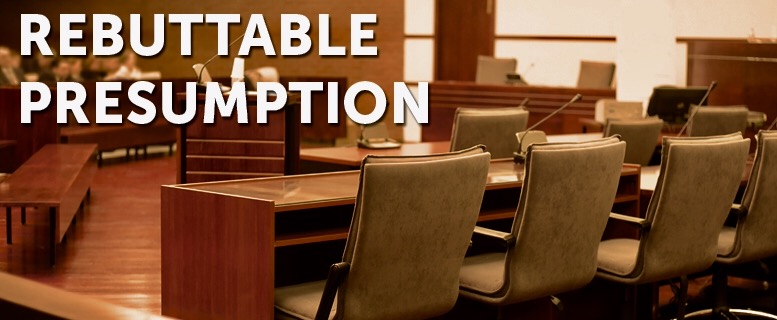Li v Li 2017 BCSC 1312 involved a father suing his daughter for the wrongful conversion of monies and the court finding for the father based on the remedy of constructive trust and tracing the monies.
THE LAW
[225] Mr. Li seeks a declaration that he is entitled to a constructive trust in respect of the Townhouse. His claim is grounded in both conversion and unjust enrichment. The approach to the remedy is the same.
[226] A constructive trust is one of several remedies potentially available to Mr. Li. What is the remedy in cases where, as here, it is money as opposed to a tangible asset that has been converted? Where the funds remain with the tortfeasor, judgment is for the dollar amount converted unless a proprietary claim can be made out. The monetary claim is often referred to as one in detinue. In the case at bar, the parties did not distinguish between conversion and detinue, and instead referred to Mr. Li’s claim as one of conversion. The potential proprietary remedy is usually, but not always, looked at from the perspective of the nature of the loss to, and the reasons for recognizing a right of property in, the claimant.
[227] To establish a proprietary remedy, Mr. Li must prove a direct link between his misappropriated funds and the Townhouse. He must also prove that a monetary award is inadequate, inappropriate, or insufficient: Harraway at paras. 51-52; Kerr v. Baranow, 2011 SCC 10 at para. 50; Peter v. Beblow, [1993] 1 S.C.R. 980; Tracey v. Instaloans Financial Solution Centres (BC) Ltd., 2008 BCSC 669; Pro-Sys Consultants Ltd. v. Microsoft Corporation, 2013 SCC 57 at para. 92; Lac Minerals Ltd. v. International Corona Resources Ltd., [1989] 2 S.C.R. 574.
[228] In Kerr, the Court described the constructive trust remedy as follows:
[50] The Court has recognized that, in some cases, when a monetary award is inappropriate or insufficient, a proprietary remedy may be required. Pettkus is responsible for an important remedial feature of Canadian law of unjust enrichment: the development of the remedial constructive trust. Imposed without reference to intention to create a trust, the constructive trust is a broad and flexible equitable tool used to determine beneficial entitlement to property (Pettkus, at pp. 843-44 and 847-88). Where the plaintiff can demonstrate a link or causal connection between his or her contributions and the acquisition, preservation, maintenance or improvement of the disputed property, a share of the property proportionate to the unjust enrichment can be impressed with a constructive trust in his or her favour (Pettkus, at pp. 852-53); Sorochan, at p. 50).
[Emphasis added]
[229] Where converted funds have been used to acquire an asset by the tortfeasor, as is the case in this action, another possible remedy may be a tracing order and an equitable lien: see, e.g., B.C. Teachers Credit Union v. Betterly, [1975] B.C.J. No. 1158 (S.C.). In some circumstances, punitive damages are awarded: Kolody v. Neil, 1998 ABQB 1009 at para. 24. Punitive damages have not been pleaded in Mr. Li’s notice of civil claim.
[230] In B.C. Teachers Credit Union, Mr. Justice Bouck granted an equitable lien to the plaintiff whose funds in the amount of $45,000 were stolen by a Mr. Smith who then used nearly all of those funds to purchase property in the name of a related person (the defendant) in the amount of $45,154.24. The plaintiff sought a declaration that it owns the property and an order conveying title to it, or alternatively a lien to the extent of $45,000. Bouck J. found that Mr. Smith had contributed $1,000 and ordered an equitable lien in favour of the plaintiff in accordance with its interest, i.e., $44,154.42/$45,154.42 or 98% of its value.
[231] In reaching his decision, Bouck J. made these remarks, which I find of assistance to this case:
[26] The $1,000 equity paid by Smith has caused me some concern since he had the land conveyed into the name of the defendant. Usually, when a person buys property with his own funds and then has the conveyance registered in the name of a stranger there is a presumption of a resulting trust. The stranger is then presumed to hold the land in trust for the purchaser. The presumption is of course rebuttable. If that principle is applied to Smith and the defendant then I would have to hold there is a presumption of a resulting trust in favour of Smith. …
[27] But the concept of a resulting trust is an equitable rule. The question then arises whether equity should play any part in assisting Smith to recover his $1,000. I think not. The greater part of the purchase price was made up of stolen money. Without it Smith could not have bought the house. The rules of equity should not be extended in any way to aid a thief in his unlawful intrigues.
[Emphasis added]
[232] This approach has been considered with approval in this province and others: Ruwenzori Enterprises Ltd. v. Walji, 2006 BCCA 448 at para. 36; Toronto-Dominion Bank v. Storr, 2014 ONSC 4278 at paras. 129-131; Kolody v. Neil, 1998 ABQB 1009 at para. 24.
[233] Consequential losses suffered by the wronged party may also be recovered, subject to the principles of remoteness: Columere Park Developments Ltd. v. Enviro Custom Homes Inc., 2010 BCSC 1248 at para. 35. For example, where the value of a converted chattel has increased, the claimant is entitled to the increase as consequential damages (which some case authorities have referred to as special damages): Cash v. Georgia Pacific Securities Corp., 1990 BCSC 1052; Asamera Oil Corp. Ltd. v. Sea Oil& General Corp. et. al., [1979] 1 S.C.R. 633.
[234] Mr. Li’s claim that he suffered a consequential loss due to rising property values since 2015 might also be considered within the realm of consequential loss. According to Columere Park, at paras. 31-32, a broad interpretation consequential loss is warranted:
[31] Conversion usually results in what can essentially be characterized as a forced sale of the chattel. The remedy of forced sale is an exceptional one, this confines the tort of conversion to major interferences which are serious enough to warrant the recovery of the full value of the goods. Typically, the value of the chattel is assessed at the time of conversion. This is different from the tort of detinue which is a continuing wrong for which the cause of action may be defeated by a return of the chattel any time before judgment. Damages for detinue are thus assessed at the time of trial. When conversion occurs, however, plaintiffs are expected to mitigate by replacing the chattel promptly.
[32] This remedial distinction between detinue and conversion is the subject of some debate and has led to the recent support for bridging the gap by awarding in conversion any increase in the value of goods as consequential damages which, ideally, would lessen the evil of having remedies dependant on procedural technicalities: The Law of Torts at 292; see also the words of Estey J. in obiter in Asamera Oil Corp. Ltd. v. Sea Oil & General Corp. [citation omitted]. With respect to acts of conversion, consequential loss typically refers to the change in value of the chattel(s) at issue, however, where funds are at issue, the valuation is simple. A somewhat broader characterization of consequential loss is appropriate in this case, and such an interpretation accords generally with the remedial principle of compensatory damages in tort law.
[Emphasis added]
[235] Damages for conversion are also subject to a plaintiffs duty to mitigate: Columere Park at para. 35. Mitigation does not arise in this case. Mr. Li acted promptly to recover the funds converted by his daughter. His counsel also conducted a title search at the early stages of the litigation to determine if she had purchased any real property with the funds. The search results were negative.
[236] Keeping those possible remedies in mind, it was only through cross-examination of Ms. Li at trial, after Mr. Li had closed his case, that he learned of Ms. Li’s purchase of the Townhouse. During closing argument, Mr. Li sought and obtained an order amending his notice of civil claim to allege a constructive remedy in respect of the Townhouse. Even without that amendment, the decision of the Court of Appeal in BNSF Railway Co. v. Teck Metals Ltd., 2016 BCCA 350 makes it clear at para. 83 that the availability of constructive trust remedy need not be decided on the basis of the pleadings:
[83] 6. Contrary to the plaintiff’s submission, all constructive trusts (whether remedial or institutional) require that the plaintiff show a monetary award would be inadequate or inappropriate, and identify property or proceeds thereof to which the plaintiff’s labour or money contributed. The process of tracing is available to enable a plaintiff to determine whether the second condition can be met.
7. There is clear authority for the proposition that the availability of a constructive trust need not be decided on the basis of pleadings. Being dependent on facts found at trial, the issue can be resolved once the plaintiff is able to make an informed choice prior to final judgment being pronounced: Tracy; Waxman; Lac Minerals.










